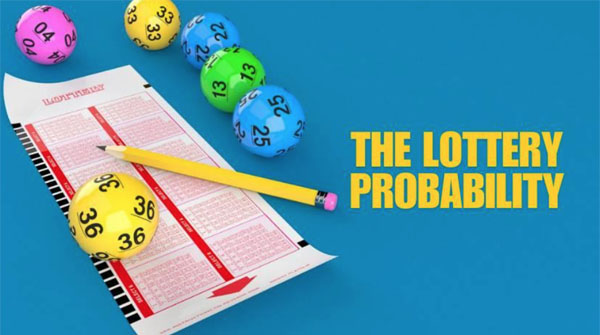Lottery Wins Decoded: Using Probability Mathematics and Data for Online Success
By Space Coast Daily // June 5, 2024

Many people dream of winning the lottery, and in this day of technology, online lottery sites such as situs togel provide easy access to a variety of games with potentially life-changing payouts.
Although most of the time lottery results are considered random, there is increasing interest in boosting the likelihood of winning numbers via the use of data and probability theory. Let’s interpret lottery trends and improve your chances of winning while playing online lotteries.
Knowing Lottery Probability:
You must grasp lottery probability before predicting numbers. Many lotteries let participants choose numbers from a list, and winning numbers are picked at random. The probability of drawing any number combination depends on all available combinations and winning combinations.
- Basic Probability Theory:
-
-
- In a regular lottery game, the likelihood of winning with a single ticket is usually low; this is sometimes expressed as the winning combination to all possible combinations ratio.
- Every draw is independent according to probability theory, hence previous results have no bearing on the outcome of the future. Notwithstanding this, some lottery players hold the belief that some numbers are “hot” or “cold,” giving numbers that have shown up often or seldom in previous draws special meaning.
-
- Combinatorial Analysis:
-
- Combinatorial analysis is a mathematical method for determining how many possibilities there are for a given collection of items. Combinatorial analysis is used in lottery games to calculate how many distinct number combinations there are overall from the supplied numbers.
- Knowing combinatorial concepts enables players to evaluate the enormous number of potential number combinations and the probability of any particular combination being drawn.
Using Data for Prediction:
Thanks to developments in technology and availability of large datasets, lottery fans may now investigate data-driven methods for forecasting winning numbers on daftar togel online. Players look for patterns or trends by examining past draw data in an effort to gain understanding that can increase their chances of choosing winning combinations.
- Gathering and Examining of Data
-
-
- Meaningful study requires gathering extensive information on previous lottery drawings. Historically drawn results, including winning numbers, dates, and jackpot amounts, are often available via online databases, official lottery websites, and third-party platforms.
- Spreadsheets, statistical programs, or own algorithms are examples of analytical tools that may help in pattern detection and data processing. Data visualization, frequency analysis, and trend identification are some of the methods used to find recurrent patterns or anomalies in lottery result.
-
- Methods for Modeling and Predicting Lottery Results:
-
- Probability mathematics provides a number of techniques. Using probability distributions, like the Poisson distribution or the binomial distribution, to calculate the chance that certain number combinations would occur in a draw is one often used technique.
- The statistical method of regression analysis may be used to find connections between previous winning numbers and other variables, including draw frequency or ball composition, using lottery data.
- Predictive models have been produced and lottery data analyzed using machine learning methods such as neural networks, decision trees, and clustering algorithms more and more. From past draw patterns, these algorithms may learn to recognize characteristics or factors linked to winning numbers.
Methods of Prediction in Practice:
Although it is still impossible to forecast lottery numbers with 100% accuracy, there are a few doable techniques that may improve your chances of success when using probability theory and data analysis for online lottery playing.
- Pattern Recognition:
-
-
- To recognize patterns in historical data, analyze it for repeating patterns like numerical sequences, consecutive numbers, or digit frequencies. Disruptions from predicted patterns may suggest draw process biases.
- Use heatmaps, histograms, or scatter plots to display lottery results and trends. Look for characteristics that vary or correlate with winning numbers.
-
- Statistical Modeling:
-
-
- Apply statistical modeling to previous draw data to predict the likelihood of certain number combinations in future drawings. Use probability distributions, regression analysis, or machine learning methods to create lottery-specific prediction models.
- Thoroughly test and validate predicting models utilizing historical data. Use cross-validation to evaluate model performance and generalizability over time or lottery games.
-
- Ensemble Approaches:
-
- Combine numerous prediction approaches or models to create an ensemble approach that combines the qualities of each strategy. By overcoming model restrictions, ensemble approaches like averaging forecasts or voting systems may enhance prediction accuracy and resilience.
- Use dynamic updating to adjust prediction models to new data or draw circumstances in real time. To account for lottery trends, always improve prediction techniques.
Challenges and Considerations:
While data-driven approaches to lottery prediction hold promise, it’s essential to acknowledge the inherent challenges and limitations associated with such methods.
- Sample Size and Variability:
-
-
- Limited sample size and variability in lottery data hinder good prediction. Lottery draws are rare, thus past data may not be enough to build reliable forecasting models.
- New lottery games, rule revisions, and draw methods may increase unpredictability and complexity, making predictive models difficult to generalize.
-
- Randomness and Uncertainty:
-
-
- Lottery results are based on chance rather than deterministic variables, resulting in randomness and uncertainty. Data analysis and probability mathematics may reveal patterns in previous data, but lottery drawings are unreliable.
- Overreliance on predictive models or algorithms may lead to false confidence or unreasonable expectations, resulting in financial losses or disappointment if forecasts fail.
-
- Ethical and Legal Implications:
-
- The use of data analysis and probability mathematics in lottery prediction involves ethical and legal concerns, including fairness, transparency, and responsible gambling. Lottery officials need players to play ethically and responsibly.
- Predictive methods and results must be transparent to retain lottery community confidence. Lottery prediction should be fun, not a certain way to make money.
Data analysis and probability mathematics may help decipher lottery trends and improve online lottery chances. While lottery numbers cannot be predicted with accuracy, historical data and statistical methods may help you make better game judgments. Players may enjoy online lottery games while recognizing chance and unpredictability by using a methodical and responsible lottery prediction method. Lottery victories should be balanced with reality, honesty, and prudent gambling.












